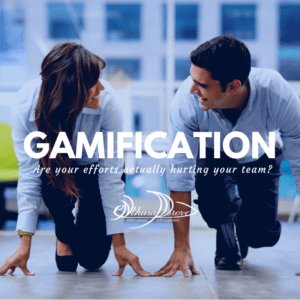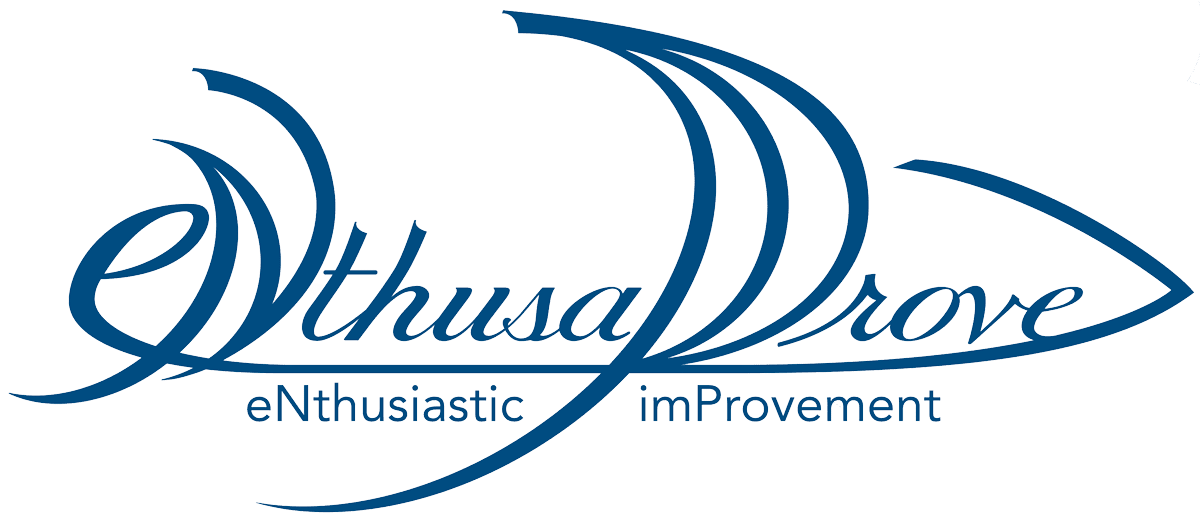 What is gamification?
What is gamification?
Gamification is the practice of adding game-like elements to work to pursue goals through good-willed competition. It’s adding fun into the workplace. For example:
- Virtual reality problem-solving video games,
- Games that help us generate ideas,
- Healthy habits health Insurance programs,
- Design challenges through innovation incubators,
- Competitive design teams.
Don’t try to “gamify” your regular work. There is a common tendency to relabel the things we do already with new business lingo tags so it appears less new and scary. Not a good idea.
Gamification is best used in areas where there are habitual or legacy patterns that need to be broken in order for the team/organization to move forward. Gamification is a tool that can help the team find the courage and focus to overcome the barriers.
Does gamification have a place on my project team?
The answer is yes. A bit of pressure is a good thing. We all need a goal, responsibility, a role to play in the outcome. The bit of requirements on us to give us the opportunity to rise to the occasion, giving our best. That is the reason gamification is so popular. Very few people (maybe none) will push through barriers and achieve new things without goals and perseverance. Gamification helps give fun competition to areas of work to encourage pursuit of goals that the organization values.
The hard part is in implementing it in a way that doesn’t create animosity within your team.
This animosity does not normally show up in outright drama on the team, it is much more subtle. Subtly, the team forms a “who’s better than who” and may try to “even the score” from what happened in a game later in the real project work.
This subtle team dynamics shift is why it is important to be intentional with the dynamics created in any game. That’s why the setup is important.
How do I setup a gamification initiative?
Think about a typical game. There are individuals or teams setup to play against another individual or team, or to collaborate toward a common goal. They are competitive. There are rules. There is a beginning, middle, and end. All of these elements mirror real life and are useful for your team. The trick is to channel the rules and environment so that building trust and cooperation is actually the key to winning (vice most games where sneaky play and deception usually help win) and still have it be fun to play.
If you are interested in adding game elements to an event, a program, an initiative, here’s the parameters to consider.
[convertkit form=1069842]
Mission
What is the hurdle your team needs to overcome? Gamification helps the team find the courage and focus to overcome the barriers. Where does your team need to change a habit or learn something new? For example,
- Using a new system,
- Demonstrating new skills,
- Acting on ideas,
- Improving safety behaviors,
- Changing work habits.
Team Identity and Space.
The game needs a name, a mission, a space and time by which it will happen. The same is true for the team/individuals that will be part of it. This is the banner, logo, icon, mascot that identifies team comradery.
These initiatives have a defined start and end date, just like a game. If your idea doesn’t lend itself to that, the game parameters need some work. Keep working on it through the next sections.
Competition
This sets up the “playing field”
- Individual pursuit to a goal (e.g. Swimming or track & field competition)
- Teams competing against other teams toward a goal. (e.g. Olympics)
- Teams collaborating to beat a system or achieve a goal. (e.g. Divisions in an Army)
I’ve found many traditional team building opportunities actually set the teams up to subtly divide and create animosity rather than building trust and interdependence. Most people don’t even realize what message it sends because we are steeped competition culturally (and I’m all for competition)!
The competition must be setup to encourage collaboration (whether individually or on the team) because if that’s what we want for the overall team, we need to teach that in the game too. How? It is all in the design. Any type of game can be setup as cooperative or competitive.
We are often so good at competition, we compete when we know we should collaborate. I’m competitive in a lot of things and I learned young that teams don’t do well when they compete within a team. How? From the foundational team…a marriage. My now husband and I took a class together in college, psychology 110. We were both engineers, so this was an elective…not an essential class. I worked so hard to beat him that I nearly wrecked the relationship. He was a natural test taker and I had to dig deep into the content to understand…so he beat me everywhere by a little bit. We could have encouraged one another and studied to do well together, but I saw the opportunity to compete. And we lost out. We both still got ‘A’s in the class, but our relationship took a toll. We still tell the story today as one of the big challenges of our early relationship.
Your team is not unlike a couple; they are both run by interpersonal dynamics. If the gamification initiative divides team members, it will divide them in other ways too. And the team will lose.
Scoring
This can be done many ways. Be careful with this one, because the system will be manipulated to achieve. Setting up the scoring system shouldn’t be taken lightly.
- Count Activity. Achieving a certain level of activity.
- Pro: Helps build confidence with a new system. Encourages use to increase familiarity. Easy to track.
- Con: Can create useless transactions, memberships, content, comments, etc. that don’t contribute to the overall goal.
- Measure Performance. These could be: goals to complete orders on time, reliability of equipment goals, uptime goals (downtime reduction), production yield, defect rate.
- Pro: Measures actual performance toward a goal. This is better than counting because it focuses energy toward results vs. activity.
- Con: Takes a good enough measurement system of the process to believe what it says.
How can you measure collaboration, sharing information, teaching/learning?
Reward
What happens when the thing is achieved? Many rewards systems pit teammates against one another. We want the team to get ahead, but we reward the individual to do better than other teammates. What could this look like?
- Monetary. This is often our first go-to thought. Salary bonuses, swag, gifts, gift cards, tickets to a football game, gift certificate to upscale restaurant, symphony tickets…they all fall into this category. The research says over and over that these things actually don’t motivate us at all. Money/gifts can only satisfy for now. It doesn’t provide deep reward that leads to true motivation. (For more on this, check out Herzberg’s famous article in HBR.) I encourage you to keep thinking to find true motivators.
- Recognition. A heartfelt congratulations is appreciated, and it must be followed through by actions. The winners should be seen as actually accomplishing something of great value. If the initiative is just busy work, it won’t live long. Announcements of winners and giving them recognition amongst peers and superiors for their accomplishments sends the signal of what the organization values. Recognition could include certificates, titles
- Opportunity. Access to an exclusive event or experience. Ideas:
- Professional event: Face time with top leaders to talk about achievements or a networking event with peers who also achieved.
- Access to a Network. This is like a Hall of Fame for achievers.
What does gamification look like?
Gamification is a valuable tool to introduce fun and competition into your team. This can spur achievement, growth, and learning. As thoughtful Team Leaders trying to build an engaged team, we need to skillfully build these initiatives.
To give you a picture of what gamification looks like, I offer a point made in the book, The Art of Possibility, by Rosamund Stone Zander & Benjamin Zander.
They claim that most of business is set up on the war/competition paradigm…that only the strong survive, and to be strong, you have to build strong. Thus, competition is a key element in building strong. Zander believes that instead of war/competition paradigm, that we use an orchestra paradigm.
The orchestra requires excellent viola, cello, bass players, etc. The individual musicians compete for first chair for their instrument. Slots in professional orchestras are fiercely competitive. This requires individual excellence, just like in your team where teammates need to be good at what they do.
However, once the concert begins, there is absolutely no competition instrument to instrument. Imagine instruments competing in a symphony…cacophony! No one would want to listen to it. Instead, there is a collaboration to let each instrument play their part to balance the music and guide the listener through the piece.
Just like the orchestra, your team members each bring excellence in skills to the table. The team needs each member to provide his/her gift toward the team mission. Then, the orchestra has the skills to perform a beautiful piece of music. Your teamwork only works when the different team skills collaborate vice compete.
Gamification can encourage a team to collaborate better together (expanding their concerto repertoire) so that the team can be more capable and successful. Skillfully create the gamification initiative to guide excellence and collaboration, taking into consideration the mission, environment, team identity, competition, scoring, and reward.
Ready to get started? Use our worksheet to organize your thoughts. Happy designing!
[convertkit form=1069842]





